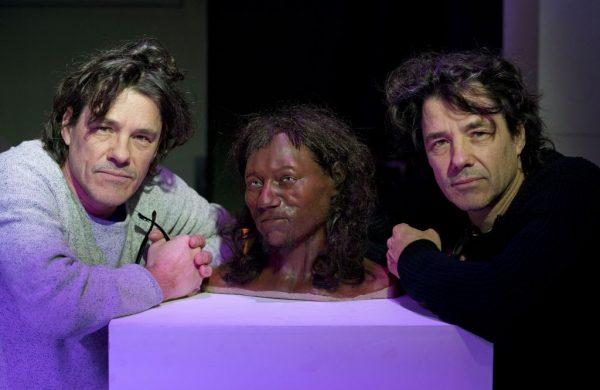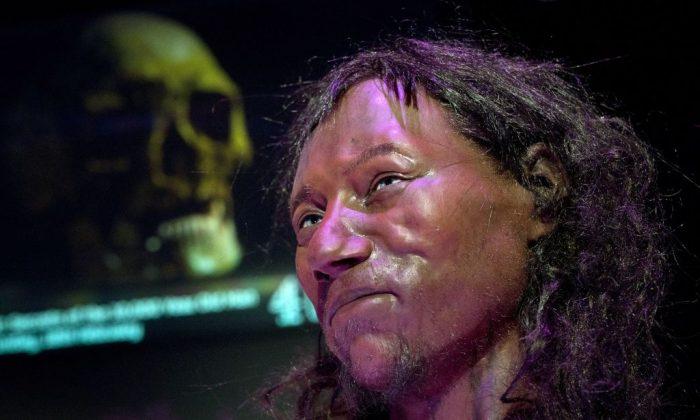The first modern humans to live in what is now the UK had “dark to black” skin and blue eyes, groundbreaking DNA research of Britain’s oldest complete skeleton reveals.
Cheddar Man’s origins and appearance are of interest to scientists because people of white British ancestry alive today are assumed to be direct descendants. The skeleton is dated to a time not long after the first settlers crossed from continental Europe to Britain at the end of the last ice age.
Previously it was widely believed that Cheddar Man had lighter skin and hair, but his DNA strongly suggests blue eyes, dark brown to black skin, and dark curly hair.
The discovery suggests that genes associated with lighter skin and hair became widespread in European populations later than originally thought.
Tom Booth, an archaeologist at the Natural History Museum said that the finding “really shows up that these imaginary racial categories that we have are really very modern constructions, or very recent constructions, that really are not applicable to the past at all.”
The DNA analysis involved drilling a 2 mm hole into the skull of Cheddar Man to extract bone powder. From this a full genome was obtained, allowing insights into the man’s appearance and lifestyle.

Results reveal a Middle Eastern origin for Cheddar Man, whose contemporaries are thought to have crossed an ancient land bridge connecting continental Europe with Britain.
Professor Chris Stringer, the Natural History Museum’s research leader in human origins, told BBC reporters that he had been “studying the skeleton of Cheddar Man for about 40 years.
“So to come face-to-face with what this guy could have looked like—and that striking combination of the hair, the face, the eye colour and that dark skin: something a few years ago we couldn’t have imagined and yet that’s what the scientific data show.”
Cheddar Man’s remains were found 115 years ago in Gough’s Cave, located in Somerset’s Cheddar Gorge. It is reported that scientists believe the man was about 5 ft 5 in tall and likely died in his early 20s.
Signs on his skull suggest he met a violent death.






Friends Read Free